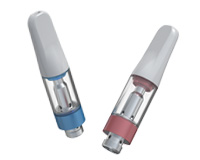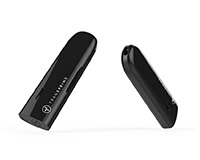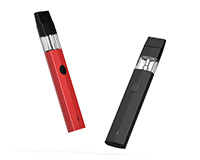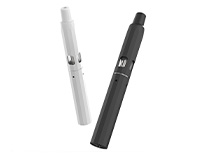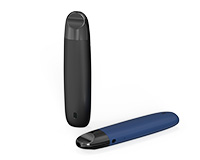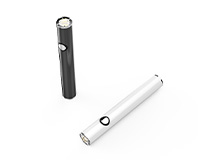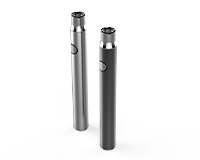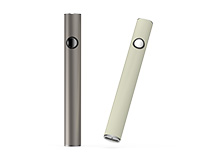How Extraction Methods Shape the Future of Cannabis Vape Pen
What’s really inside your cannabis vape pen—and how did it get there?
As cannabis vapes become more refined and widely available, many consumers and even brands focus on sleek devices, vapor performance, and flavor profiles. But few stop to ask the deeper question: how was the cannabis vape oil inside extracted?
The answer matters more than you might think. The extraction method doesn’t just determine potency—it affects taste, purity, viscosity, and even how well the oil works with different hardware. Whether it’s a budget-friendly distillate, a terpene-rich live resin, or a solventless rosin prized by connoisseurs, the method of extraction plays a major role in defining product quality and consumer experience.
In this article, we dive into the most common extraction techniques used in cannabis vape products today—and how each one can impact your formulation, your brand, and your bottom line.
1. Solvent-Based Extractions: Efficiency Meets Complexity
Solvent-based extraction methods use chemical solvents to strip cannabinoids and terpenes from raw cannabis biomass. These methods are efficient, scalable, and widely used across the industry. The most common solvents include butane, propane, ethanol, and CO₂.
a. Butane Hash Oil (BHO) Extraction
Process: Cannabis is soaked or blasted with butane to extract cannabinoids, terpenes, and other compounds. The solvent is then purged, typically in a vacuum oven.
Result: Yields a range of textures like shatter, wax, and live resin.
Pros: High terpene retention, flavorful; widely used for live resin vapes.
Cons: Safety risks, requires careful post-processing to remove solvent residues.
b. Ethanol Extraction
Process: Cannabis is soaked in ethanol, which dissolves cannabinoids and terpenes. Afterward, the ethanol is evaporated.
Result: Typically used for distillate-based vape oils.
Pros: Cost-effective at scale, clean with proper filtration.
Cons: Tends to strip away delicate terpenes unless processed carefully.
c. Supercritical CO₂ Extraction
Process: CO₂ is pressurized into a “supercritical” state, behaving as both a gas and a liquid. This allows it to selectively extract cannabinoids.
Result: Clean, terpene-rich extracts suitable for cartridges and tinctures.
Pros: No harmful residues; environmentally friendly.
Cons: Expensive equipment; lower yield compared to hydrocarbon methods.
2. Solventless Extractions: Purity and Craftsmanship
Solventless methods use heat, pressure, or filtration—but no chemical solvents—to extract cannabinoids and terpenes. These techniques are gaining traction due to their “clean label” appeal.
a. Rosin Pressing
Process: Dried or fresh cannabis flower (or hash) is pressed under heat and pressure to release resin.
Result: Rosin—a golden, terpene-rich oil.
Pros: Solvent-free, full-spectrum, ideal for connoisseur products.
Cons: Lower yield; more expensive; can clog the ceramic core of cannabis vape hardware due to lipids and waxes.
b. Ice Water Hash (Bubble Hash)
Process: Cannabis is agitated in ice water, causing trichomes to break off and be collected via micron screens.
Result: High-grade hash that can be pressed into rosin.
Pros: Extremely clean; rich in flavor; fits solventless consumer demand.
Cons: Labor-intensive; not always ideal for vape formulation without further processing.
3. Distillation: Potency at the Cost of Flavor
Distillation is a post-extraction process that removes everything but cannabinoids, typically THC or CBD, using heat and vacuum pressure.
Process: Crude oil is refined via short-path or wiped-film distillation.
Result: THC/CBD distillate—an odorless, flavorless oil often re-infused with terpenes.
Pros: Highly potent and consistent; easy to blend with flavor profiles.
Cons: Lacks full-spectrum complexity; relies on added terpenes for taste.
Distillates are the base of many vape products due to their versatility and neutral character. They allow brands to create standardized products across batches and flavor profiles.
4. Live Resin & Live Rosin: The Fresh-Frozen Revolution
Both live resin and live rosin start with fresh-frozen cannabis, which is processed shortly after harvest to preserve delicate terpenes and cannabinoids that are often lost in dried flower.
Live Resin: Extracted using butane (BHO); celebrated for its rich, strain-specific taste.
Live Rosin: Solventless and pressed from fresh-frozen hash or flower; prized for purity and flavor.
These “live” products are becoming premium favorites in the cannabis vaporizer category, especially among terpene lovers and wellness-conscious consumers.
Choosing the Right Extract: What Matters Most?
Each method has its place in the cannabis vape world. For brands and manufacturers, the ideal extract depends on factors such as:
Target Market: Distillate vapes suit newcomers and price-sensitive buyers; rosin caters to purists and connoisseurs.
Hardware Compatibility: Some extracts (like solventless rosin) are thicker and can clog standard ceramic coils without proper tuning.
Regulatory Standards: Residual solvent limits and testing standards may favor cleaner methods in certain regions.
Brand Positioning: “Clean,” “natural,” and “solvent-free” are powerful claims—especially in wellness-driven markets.




